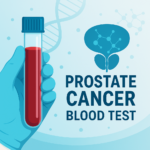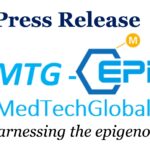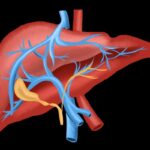A new clinical trial has been launched that will test the effect of resveratrol and exercise on aging patients.
Aging is a complex process that affects all body systems which fail slowly with age for a number of reasons. One of the mechanisms that slows us down during aging is the gradual failure of mitochondria an organelle that generates energy for our cells. This is especially noticeable in nerve and muscle cells. Numerous features of mitochondria decline with age, as do the content of important compounds in muscle cells. Fortunately, regular exercise, especially aerobic exercise, is one way to maintain mitochondrial function. Scientists have shown experimentally that regular exercise can improve mitochondrial function. In fact, exercise not only helps us in mobility and weight control, but also maintains the health of muscle cells. Unfortunately, as we age, it becomes more difficult for us to exercise, and mitochondria do not always respond positively to exercise. Starting in later stages of middle age, recent scientific studies show that exercise can no longer fully maintain muscle health. This means that other methods need to be applied to help maintain the flow of energy in the cells of the elderly.
However, it turns out that there may be alternative routes to support your mitochondria. A number of chemical compounds can help maintain and restore our cellular energy factories. One such compound is resveratrol. This compound is a phytochemical and is present in the skins of grapes and the roots of some plants. Resveratrol belongs to a group of agents called antioxidants. These chemicals are capable of eliminating so-called reactive oxygen species that can break down important biological molecules. In addition, resveratrol interacts with several genes important for mitochondrial activity – AMPK, SIRT1, and SIRT3. SIRT1 is a gene that is particularly important for mitochondrial activity. In mice, activation of the SIRT1 gene by resveratrol unblocks another factor, PGC-1α, which stimulates the creation of new mitochondria.
In another experiment, resveratrol combined with exercise resulted in improvements in some muscle parameters in elderly mice. The study authors decided to replicate this idea for older patients and see if a combination of exercise with resveratrol improves well-being, mobility, and muscle condition in older patients.
It was decided to conduct the research in accordance with the guidelines for the so-called double-blind trials, which provide the most objective results for testing the effectiveness of medical interventions. In clinical trials, the combination of resveratrol in tablet form and specially prescribed exercise has been studied. About 60 men and women aged 65 and over were selected. Before participating in the study, all participants were sedentary. The study design selected the people who would benefit the most – those who have certain physical limitations, such as difficulty crossing corridors and speed walking. Overall, there were three groups of participants:
- Those who took placebo
- Those who took resveratrol at a dosage of 500mg/day
- Those who took resveratrol at a dosage of 1000 mg/day
All participants also joined the exercise program.
All participants would be tested for several parameters:
- Self-assessment of the state of health before and after the trial;
- Condition of muscle tissue based on muscle biopsy (for those patients who are ready to participate in such a study);
- Strength of the lower limbs before/after the program
- Ability to walk at speed before and after the program.
- State of the mitochondria before and after the program.
Scientists hope that this trial will bring a number of benefits, both theoretical and practical. On the one hand, they will better understand muscle aging in humans; on the other hand, they can develop a system that has the potential to support elderly patients who are forced to lead a passive sedentary lifestyle.
Literature
- Chistiakov. D. A., et al. [2014]. Mitochondrial Aging and Age-Related Dysfunction of Mitochondria. Biomed Research International, Volume 2014, Article ID ID 238463. Retrieved November 29, 2020 from: https://www.hindawi.com/journals/bmri/2014/238463/
- Toledo, F. G. S. and B. H. Goodpaster [October 2013]. The role of weight loss and exercise in correcting skeletal muscle mitochondrial abnormalities in obesity, diabetes and aging. Molecular and Cellular Endocrinology, V. 379, Issues 1-2, pp. 30-34.
- Salehi, B. et al. [September 2019]. Resveratrol: A Double-Edged Sword in Health Benefits. Biomedicines, V. 6, № 3, p. 91. Retrieved November 29, 2020 from: https://www.ncbi.nlm.nih.gov/pmc/articles/PMC6164842/
- Olsen, N. [May 29, 2018]. How can antioxidants benefit our health? MedicalNewsToday. Retrieved November 29, 2020 from: https://www.medicalnewstoday.com/articles/301506
- Mohar, D.S. and S. Malik [November 2013]. The Sirtuin System: The Holy Grail of Resveratrol? J. Clin. Exp. Cardiolog., V. 3. № 11, p. 216. Retrieved November 29, 2020 from: https://www.ncbi.nlm.nih.gov/pmc/articles/PMC3613783/
- Higashida, K. et al. [July 9, 2013]. Effects of Resveratrol and SIRT1 on PGC-1α Activity and Mitochondrial Biogenesis: A Reevaluation. PLoS Biol., v. 11, № 7, p. e 1001603. Retrieved November 29, 2020 from: https://www.ncbi.nlm.nih.gov/pmc/articles/PMC3706311/
- Rodriguez-Bies, E. et al. [September 28, 2016]. Resveratrol primes the effects of physical activity in old mice. British Journal of Nutrition, Volume 116, Issue 6, pp. 979-988.
Cherry, K. [April 02, 2020]. What is a double blind study. Very Well mind. Retrieved November 29, 2020 from: https://www.verywellmind.com/what-is-a-double-blind-study-2795103
Recent Blog Posts
-
 13 Jun 2025MTL Epitherapeutics and RI-MUHC Develop Early Prostate Cancer Blood Test
13 Jun 2025MTL Epitherapeutics and RI-MUHC Develop Early Prostate Cancer Blood Test -
 11 Jan 2025EpiAge Research Publication Signals a New Era in Understanding Biological Aging
11 Jan 2025EpiAge Research Publication Signals a New Era in Understanding Biological Aging -
 18 Nov 2024EpiMedtech Global Announces FDA Registration of EPIAGE, the First Epigenetic Age Test Registered by the FDA
18 Nov 2024EpiMedtech Global Announces FDA Registration of EPIAGE, the First Epigenetic Age Test Registered by the FDA -
 18 Nov 2024EpiMedTech Global Validates Unique epiCervix HPV Combo Test for Cervical Cancer Detection
18 Nov 2024EpiMedTech Global Validates Unique epiCervix HPV Combo Test for Cervical Cancer Detection -
 31 Oct 2024HKG epiTherapeutics’ MetaGen Genetic Risk Assessment Test Receives FDA Registration, Now Available in the U.S.
31 Oct 2024HKG epiTherapeutics’ MetaGen Genetic Risk Assessment Test Receives FDA Registration, Now Available in the U.S. -
 31 Oct 2024EpiMedTech Global Launches epiGeneComplete: A Breakthrough Genetic and Epigenetic Test for Comprehensive Health Diagnostics
31 Oct 2024EpiMedTech Global Launches epiGeneComplete: A Breakthrough Genetic and Epigenetic Test for Comprehensive Health Diagnostics -
 30 Oct 2024Enhanced Early Detection of Liver Cancer
30 Oct 2024Enhanced Early Detection of Liver Cancer -
 08 Oct 2024Are Microarrays Still Reliable? How Next-Generation Sequencing Outperforms Traditional Methods
08 Oct 2024Are Microarrays Still Reliable? How Next-Generation Sequencing Outperforms Traditional Methods



